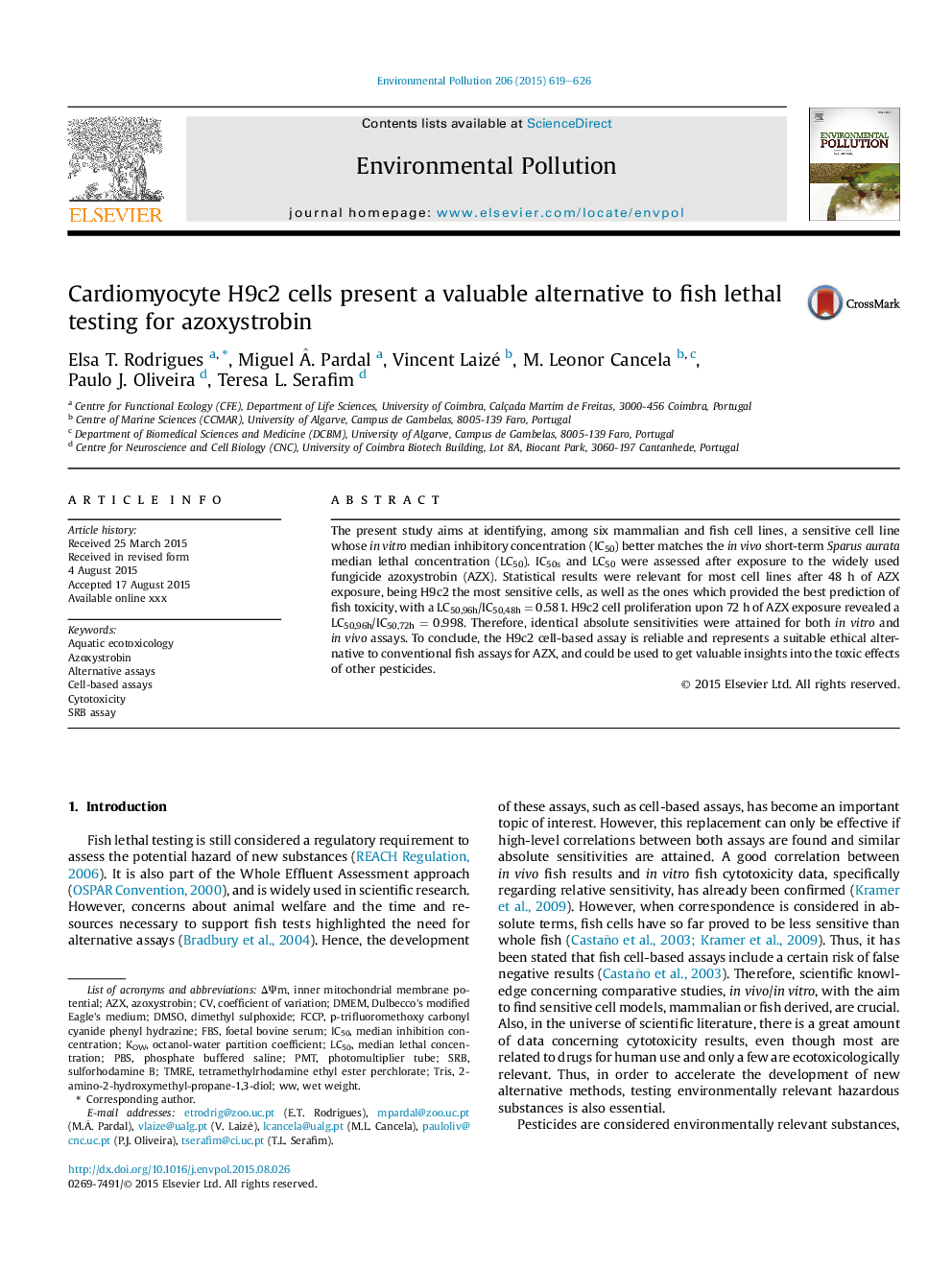| Article ID | Journal | Published Year | Pages | File Type |
|---|---|---|---|---|
| 6316875 | Environmental Pollution | 2015 | 8 Pages |
Abstract
The present study aims at identifying, among six mammalian and fish cell lines, a sensitive cell line whose in vitro median inhibitory concentration (IC50) better matches the in vivo short-term Sparus aurata median lethal concentration (LC50). IC50s and LC50 were assessed after exposure to the widely used fungicide azoxystrobin (AZX). Statistical results were relevant for most cell lines after 48 h of AZX exposure, being H9c2 the most sensitive cells, as well as the ones which provided the best prediction of fish toxicity, with a LC50,96h/IC50,48h = 0.581. H9c2 cell proliferation upon 72 h of AZX exposure revealed a LC50,96h/IC50,72h = 0.998. Therefore, identical absolute sensitivities were attained for both in vitro and in vivo assays. To conclude, the H9c2 cell-based assay is reliable and represents a suitable ethical alternative to conventional fish assays for AZX, and could be used to get valuable insights into the toxic effects of other pesticides.
Keywords
IC50FCCPΔΨmPMTTMRELC50TRISSRBFBSDMEMPBS2-amino-2-hydroxymethyl-propane-1,3-diolDMSODulbecco's modified Eagle's mediumCell-based assaysAzoxystrobintetramethylrhodamine ethyl ester perchlorateSRB assaydimethyl sulphoxidefoetal bovine serumAquatic ecotoxicologyCytotoxicitysulforhodamine BCoefficient of VariationOctanol-water partition coefficientMedian lethal concentrationPhosphate buffered salinephotomultiplier tubewet weightKow
Related Topics
Life Sciences
Environmental Science
Environmental Chemistry
Authors
Elsa T. Rodrigues, Miguel Ã. Pardal, Vincent Laizé, M. Leonor Cancela, Paulo J. Oliveira, Teresa L. Serafim,
